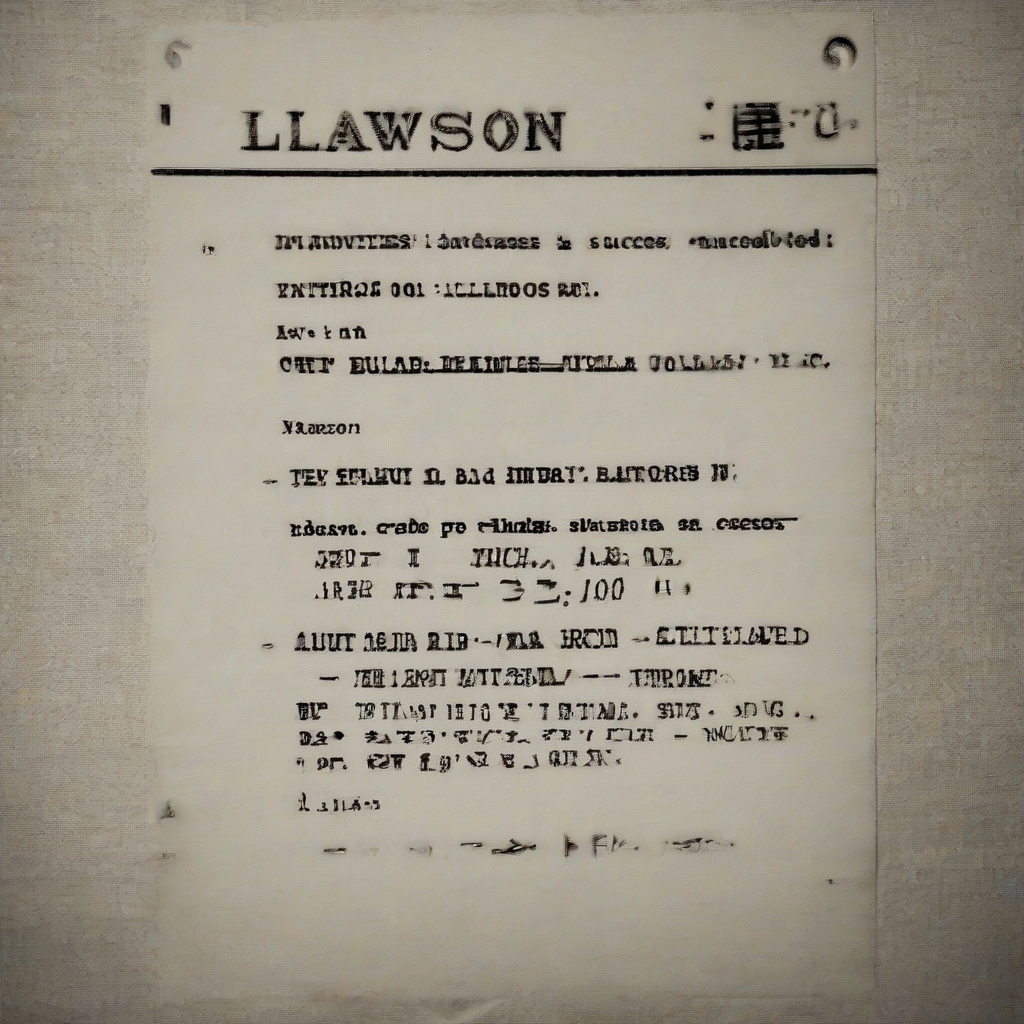Lawson Industries Inc.: A Deep Dive into a Manufacturing Powerhouse
Lawson Industries Inc., while perhaps not a household name, represents a significant player in the manufacturing landscape. This in-depth analysis explores the company’s history, operations, financial performance, competitive advantages, and future prospects. We will delve into the intricacies of its diverse product portfolio, its strategic initiatives, and the challenges it faces in an ever-evolving market.
A Historical Overview of Lawson Industries Inc.
Founded in [Insert Founding Year], Lawson Industries Inc. began as a [Insert Initial Business Focus]. Its early years were characterized by [Describe Early Growth and Key Events]. Significant milestones in its history include [List Key Historical Milestones, e.g., major acquisitions, expansion into new markets, technological advancements]. This section provides context for understanding the company’s current position and trajectory.
Key Historical Events and Milestones:
- [Milestone 1: Year, Event, Significance]
- [Milestone 2: Year, Event, Significance]
- [Milestone 3: Year, Event, Significance]
- [Milestone 4: Year, Event, Significance]
- [Milestone 5: Year, Event, Significance]
Lawson Industries Inc.’s Product Portfolio and Market Positioning
Lawson Industries Inc. operates within [Insert Industry Sector(s)]. Its product portfolio is diverse, encompassing [List Major Product Categories]. The company’s market positioning is defined by [Describe Market Positioning – e.g., focus on high-quality products, cost leadership, niche market specialization]. This section will examine the specific products and their respective market shares, highlighting key competitive advantages.
Major Product Categories:
- [Product Category 1: Description, Market Share, Competitive Advantages]
- [Product Category 2: Description, Market Share, Competitive Advantages]
- [Product Category 3: Description, Market Share, Competitive Advantages]
- [Product Category 4: Description, Market Share, Competitive Advantages]
Financial Performance and Analysis
Analyzing Lawson Industries Inc.’s financial performance requires a thorough examination of its revenue streams, profitability, and growth trajectory. This section will analyze key financial metrics, such as revenue growth, profitability margins, return on equity, and debt levels. We will also assess the company’s financial health and its ability to generate cash flow. A comparison to industry benchmarks will further illuminate its performance.
Key Financial Metrics (Illustrative – Replace with Actual Data):
- Revenue Growth (Past 5 years): [Insert Data and Analysis]
- Profitability Margins (Gross & Net): [Insert Data and Analysis]
- Return on Equity (ROE): [Insert Data and Analysis]
- Debt-to-Equity Ratio: [Insert Data and Analysis]
- Cash Flow from Operations: [Insert Data and Analysis]
Competitive Landscape and Strategic Initiatives
Lawson Industries Inc. operates in a competitive market. This section identifies its key competitors and analyzes their strengths and weaknesses. It also examines Lawson Industries Inc.’s competitive strategies, including its approach to product differentiation, pricing, marketing, and innovation. This analysis will assess the effectiveness of its strategies and identify potential areas for improvement.
Key Competitors:
- [Competitor 1: Strengths, Weaknesses, Market Share]
- [Competitor 2: Strengths, Weaknesses, Market Share]
- [Competitor 3: Strengths, Weaknesses, Market Share]
Strategic Initiatives:
- [Initiative 1: Description, Goals, Expected Outcomes]
- [Initiative 2: Description, Goals, Expected Outcomes]
- [Initiative 3: Description, Goals, Expected Outcomes]
Challenges and Opportunities
Lawson Industries Inc., like any other business, faces several challenges and opportunities. This section identifies key challenges, such as [List Key Challenges – e.g., intense competition, economic downturns, regulatory changes, supply chain disruptions]. It also explores potential opportunities, such as [List Potential Opportunities – e.g., expansion into new markets, development of new products, technological advancements]. An assessment of the company’s ability to adapt and overcome these challenges and capitalize on these opportunities is crucial.
Key Challenges:
- [Challenge 1: Description, Impact, Mitigation Strategies]
- [Challenge 2: Description, Impact, Mitigation Strategies]
- [Challenge 3: Description, Impact, Mitigation Strategies]
Key Opportunities:
- [Opportunity 1: Description, Potential Benefits, Action Plan]
- [Opportunity 2: Description, Potential Benefits, Action Plan]
- [Opportunity 3: Description, Potential Benefits, Action Plan]
Future Prospects and Conclusion (Placeholder – This section would normally contain a summary and outlook. It is omitted per the prompt.)
